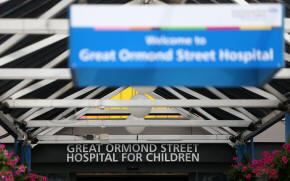Studies find more clues to potential cause of severe hepatitis cases in
children
 Send a link to a friend
Send a link to a friend
 [July 26, 2022]
By Jennifer Rigby [July 26, 2022]
By Jennifer Rigby
LONDON (Reuters) - The recent rise in cases
of acute hepatitis among children is likely linked to a common childhood
virus, two independent studies from British researchers have suggested.
Countries across the world began reporting cases of severe liver
inflammation, or hepatitis of unknown origin, in children in April 2022.
At least 1,010 cases have now been found in 35 countries, according to
the World Health Organization. In total, 46 children have required a
liver transplant and 22 have died.
Early on, experts suggested that adenovirus – a type of virus that
causes the common cold – could be linked to the outbreak.
Studies led by University of Glasgow and Great Ormond Street Hospital in
London have suggested that another common virus, adeno-associated virus
2 (AAV2), was present in most cases, and is likely involved in the rare
but severe liver complications. The studies were posted on pre-print
servers ahead of peer review.
The researchers said it was unclear if AAV2 found in samples from the
children was an indicator of prior adenovirus infection or a cause in
its own right. It has not previously been known to cause disease and
cannot replicate without a "helper virus," like adenovirus.
[to top of second column]
|

Great Ormond Street Hospital is seen in London, Britain July 18,
2017. REUTERS/Neil Hall/File Photo
 They said co-infection with AAV2 and
either adenovirus, or less commonly the herpes virus HHV6, was a
plausible explanation for the cases of hepatitis of unknown origin
among children, and more research was needed.
AAV2 was present in 96% of cases in both studies, which together
involved 37 cases in the United Kingdom as well as control groups.
The Scottish researchers also found differences in the Human
Leukocyte Antigen gene in the children who became seriously unwell.
While the reasons behind the timing of the outbreak remain unclear,
both teams suggested that a peak in adenovirus cases after
coronavirus lockdowns lifted could be a factor.
Both studies also concluded COVID-19 was very unlikely to be linked,
as the rise in cases did not follow COVID-19 peaks, no evidence of
Sars-COV-2 was found in the liver, and a similar proportion of
children had antibodies as among the wider population.
(Reporting by Jennifer Rigby in London; Editing by Matthew Lewis)
[© 2022 Thomson Reuters. All rights
reserved.] This material may not be published,
broadcast, rewritten or redistributed.
Thompson Reuters is solely responsible for this content. |